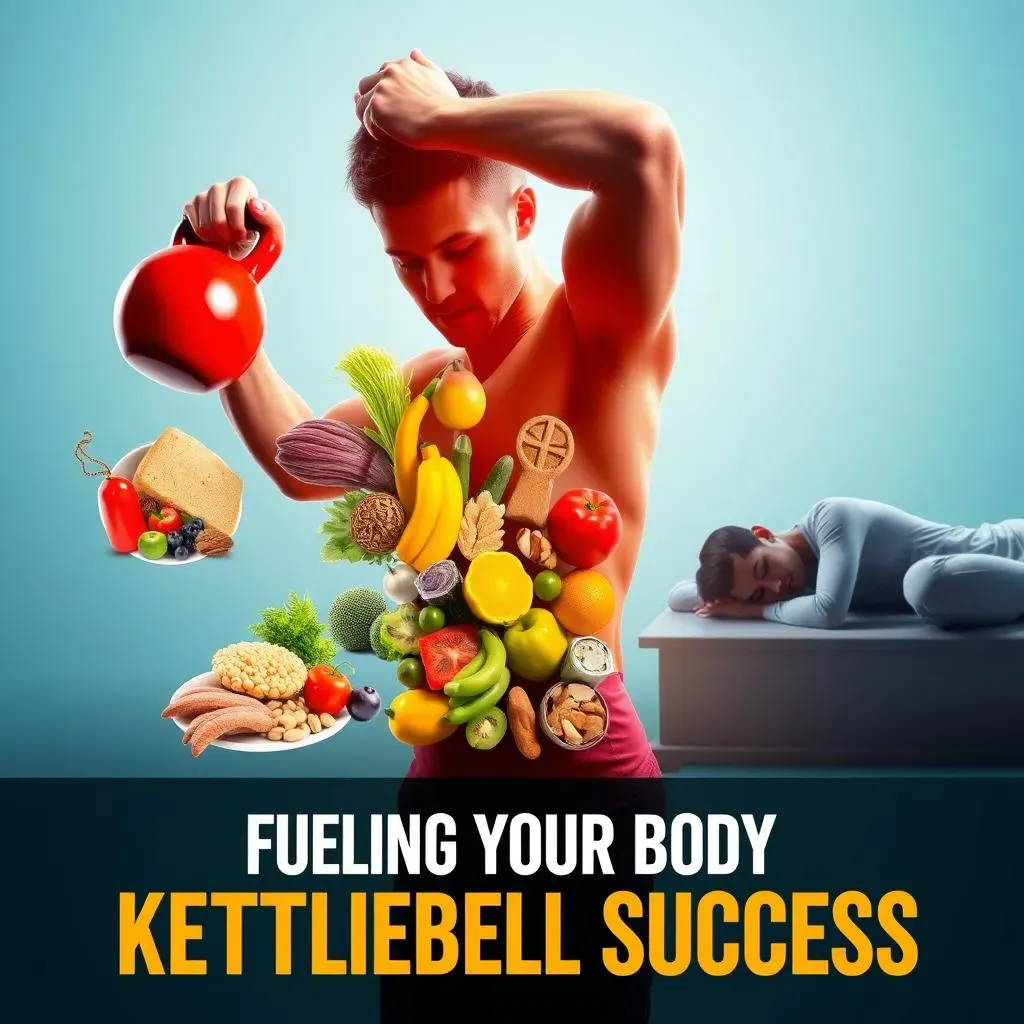Table of Contents
Short on time but big on fitness goals? You're in the right spot. This article dives into the world of the quick full body kettlebell workout, designed to deliver maximum results in minimal time. Forget spending hours at the gym – we're talking efficient, effective, and totally doable, even on your busiest days. Kettlebells aren't just trendy; they're powerhouses for building strength, torching calories, and improving your overall fitness. From mastering the fundamental moves to crafting a routine that fits your schedule, we'll cover everything you need to know to get started. We will also address all safety concerns, modifications, and how to get the most of your workout. Get ready to unlock a fitter, stronger you with the ultimate guide to the quick full body kettlebell workout.
Unlock FullBody Fitness: The Power of Kettlebell Workouts

Unlock FullBody Fitness: The Power of Kettlebell Workouts
Why Kettlebells? The All-In-One Workout
so you're curious about kettlebells. Awesome! Let me tell you, they're not just some gym fad. These cannonball-shaped weights with handles are like a secret weapon for total-body conditioning. Unlike dumbbells or barbells that isolate muscles, kettlebells engage multiple muscle groups at once, giving you a serious bang for your buck. Think of it as strength training meets cardio – you're building muscle, burning fat, and improving your endurance all at the same time. It's efficient, effective, and, dare I say, kinda fun once you get the hang of it.
What makes kettlebells different? It's all about the offset center of gravity. That uneven weight distribution forces your body to work harder to stabilize and control the bell, which fires up your core and those smaller, often-neglected stabilizer muscles. This leads to better balance, coordination, and overall functional strength – things that translate directly into everyday activities. Whether you're hauling groceries, chasing after kids, or just trying to avoid tripping on the sidewalk, kettlebell training can make you feel more powerful and resilient.
- Full-Body Engagement: Works multiple muscle groups simultaneously.
- Cardio and Strength: Combines the benefits of both types of training.
- Improved Balance: Enhances stability and coordination.
- Functional Strength: Builds strength that translates to real-life activities.
The Benefits Beyond the Burn
So, we've established that kettlebells are great for building strength and burning calories, but the benefits don't stop there. Kettlebell training can also improve your posture, increase your flexibility, and boost your mental toughness. The dynamic movements involved in kettlebell exercises require focus and concentration, which can help sharpen your mind and reduce stress. Plus, there's just something incredibly satisfying about swinging a heavy weight around – it's a great way to release tension and feel like a total badass.
Beyond the physical and mental perks, kettlebells are also incredibly versatile and cost-effective. You don't need a ton of space or expensive equipment to get a great workout. A single kettlebell and a small area are all you need to start seeing results. And because kettlebell exercises are so adaptable, you can easily modify them to suit your fitness level and goals. Whether you're a complete beginner or a seasoned athlete, there's a kettlebell workout out there for you.
Benefit | Description |
|---|---|
Improved Posture | Strengthens back and core muscles for better alignment. |
Increased Flexibility | Enhances range of motion through dynamic movements. |
Mental Toughness | Requires focus and concentration, reducing stress. |
Cost-Effective | Minimal equipment needed for a full workout. |
Your GoTo Quick Full Body Kettlebell Workout Routine

Your GoTo Quick Full Body Kettlebell Workout Routine
The 20-Minute Blast: Your Express Workout
Alright, let's get down to business. You're busy, I get it. That's why this quick full body kettlebell workout is designed to be a 20-minute powerhouse. We're talking maximum impact with minimum time commitment. Before we jump in, remember to warm up for about 5 minutes with some light cardio and dynamic stretching – arm circles, leg swings, torso twists – you know the drill. This will help prevent injuries and get your muscles ready to work. Now, grab your kettlebell (start with a weight that feels challenging but manageable – we'll talk more about choosing the right weight later) and let's get started!
- Warm-up (5 minutes): Light cardio and dynamic stretching.
- Workout (20 minutes): Follow the routine below.
- Cool-down (5 minutes): Static stretching, holding each stretch for 30 seconds.
The Workout Breakdown: Moves that Matter
This routine focuses on compound movements that work multiple muscle groups simultaneously, giving you the most bang for your buck. Each exercise is performed for 30 seconds, followed by 15 seconds of rest. Complete 2-3 rounds, depending on your fitness level. Remember to focus on proper form over speed – it's better to do fewer reps with good form than to rush through the exercises and risk injury. And listen to your body! If you need to take a longer break, do it. This workout is about challenging yourself, not pushing yourself to the point of exhaustion.
Here is a list of exercises:
- Kettlebell Swings: The king of kettlebell exercises!
- Goblet Squats: Hold the kettlebell close to your chest as you squat.
- Kettlebell Deadlifts: Hinge at your hips and keep your back straight.
- Overhead Press: Press the kettlebell overhead, keeping your core engaged.
- Russian Twists: Sit with your knees bent and twist from side to side, tapping the kettlebell on the ground.
Mastering Kettlebell Form: Safety First for Full Body Results

Mastering Kettlebell Form: Safety First for Full Body Results
Why Form Matters: Injury Prevention and Maximized Gains
Alright, let's talk about form. I know, I know, it's not the sexiest topic, but trust me, it's the most important thing when it comes to kettlebell training. Good form isn't just about looking good; it's about preventing injuries and maximizing the effectiveness of each exercise. Think of it this way: you can swing a kettlebell around all day long, but if you're not using proper form, you're just wasting your time and potentially setting yourself up for a strain, sprain, or something even worse. We want full body results, not full body aches!
Proper form ensures that you're engaging the right muscles, protecting your joints, and moving efficiently. It allows you to lift heavier weights, perform more reps, and ultimately, get better results. It's like building a house – you need a solid foundation before you can start adding the fancy stuff. With kettlebells, your form is that foundation. So, let's break down some key principles to keep in mind.
Key Form Principles: The Foundation of Safe Kettlebell Training
So, what are the key principles of good kettlebell form? Here are a few things to keep in mind:
- Engage Your Core: Think of your core as the powerhouse of your body. Keep it tight and engaged throughout every exercise.
- Maintain a Neutral Spine: Avoid rounding or arching your back. Keep your spine in a natural, neutral position.
- Hinge at the Hips: Many kettlebell exercises involve hinging at the hips, not bending at the waist. This protects your lower back.
- Use Your Legs: Your legs should be doing most of the work, not your arms or back.
- Control the Weight: Don't let the kettlebell control you. Maintain control of the weight throughout the entire movement.
These principles apply to almost every kettlebell exercise, so make sure you're focusing on them every time you pick up a bell. And if you're not sure about your form, don't be afraid to ask for help from a qualified trainer. A few sessions with a pro can make a huge difference in your technique and prevent injuries down the road.
Form Principle | Description | Benefit |
|---|---|---|
Engage Core | Tighten abdominal muscles. | Stabilizes spine, prevents injury. |
Neutral Spine | Maintain natural back curve. | Reduces lower back strain. |
Hinge at Hips | Bend from hips, not waist. | Protects lower back. |
Use Your Legs | Power movements with legs. | Reduces strain on arms and back. |
Control Weight | Maintain control of the bell. | Prevents jerky movements and injury. |
Beyond the Workout: Maximizing Your Kettlebell Results

Beyond the Workout: Maximizing Your Kettlebell Results
Fueling Your Body: Nutrition for Kettlebell Success
Alright, you're crushing those kettlebell workouts, mastering your form, and feeling stronger than ever. But let's be real – you can't out-train a bad diet. What you put into your body is just as important as what you do with it. Think of your nutrition as the fuel that powers your kettlebell engine. If you're running on empty or filling up with junk, you're not going to get very far. So, let's talk about how to fuel your body for kettlebell success.
First and foremost, focus on whole, unprocessed foods. Load up on lean protein, complex carbohydrates, and healthy fats. Protein is essential for muscle repair and growth, so make sure you're getting enough of it in your diet. Complex carbs provide sustained energy to power you through your workouts. And healthy fats are important for hormone production and overall health. Think chicken breast, sweet potatoes, avocados, nuts, and seeds – the good stuff. It's not about restrictive dieting; it's about making smart choices that support your fitness goals.
Recovery is Key: Rest, Sleep, and Active Recovery
So, you're eating right and crushing your workouts. Awesome! But here's a secret weapon that many people overlook: recovery. Your body doesn't build muscle during your workouts; it builds muscle during rest and recovery. If you're not giving your body enough time to recover, you're not going to see the results you want. Think of recovery as the yin to your workout's yang – they need each other to create balance.
Prioritize sleep. Aim for at least 7-8 hours of quality sleep per night. Sleep is when your body repairs muscle tissue, replenishes energy stores, and releases growth hormone. It's also important to incorporate active recovery into your routine. Active recovery involves light activities like walking, swimming, or yoga that help improve blood flow, reduce muscle soreness, and promote healing. Listen to your body and give it the rest it needs to come back stronger.
Recovery Strategy | Description | Benefit |
|---|---|---|
Adequate Sleep | Aim for 7-8 hours per night. | Muscle repair, hormone regulation. |
Active Recovery | Light activity like walking or yoga. | Improves blood flow, reduces soreness. |
Proper Hydration | Drink plenty of water. | Supports muscle function, prevents cramps. |
Stress Management | Practice relaxation techniques. | Reduces cortisol levels, promotes healing. |
Your Kettlebell Journey: Quick, Effective, and Sustainable
Incorporating a quick full body kettlebell workout into your routine is more than just a trend; it's a commitment to efficient, effective fitness. Remember to prioritize form over speed, listen to your body, and gradually increase the intensity as you get stronger. With consistency and dedication, you'll not only see physical changes but also experience improved balance, coordination, and overall well-being. So, grab that kettlebell and start sculpting a healthier, fitter you, one swing at a time.